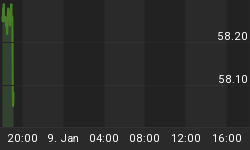June Treasury Bonds and June Treasury Notes continue to drift lower as yields rise. This current downtrend doesn't look like speculation that rates will rise but seems to be reflecting the true condition of the economy at this time.
Experts have been saying for months that rates would rise but many investors seemed to think there would be a sudden spike in rates due to the massive amount of debt created by the Treasury. Instead we have been seeing a gradual increase rather than a huge surge.
Rates should continue to rise into next week which means lower financial instruments as the Treasury is poised to issue additional long-term debt. There doesn't seem to be a panic about this refunding. The Fed seems to be in control of the situation as it increases its balance sheet buy purchasing government assets.
The purpose behind buying assets is to keep mortgage rates down to encourage new mortgages while refinancing old. The Fed seems interested in only accomplishing this while holding yields steady. I don't recall ever seeing that they would stop rates from moving higher. At this time its primary interest is in keeping mortgage rates down while preventing a spike in government rates as the economy recovers. During the bottoming process of the economy, the Fed is no doubt already beginning to work on an exit strategy.
Equity futures surged yesterday but weakened into the close. The top coincided with Chrysler filing bankruptcy. This news gave investors an excuse to take profits but should not be called a "shock" as the market has most likely already priced in the bankruptcy. After all, it's been in the news since December.
The real concern for stock traders should be money flows. Investors currently long the market, are debating whether to take a little off the top or add to their winning positions. Those who missed the bottom are debating whether to enter the game at these lofty levels. With Treasury yields rising, I am sure that some stock investors are seriously considering taking some money out of risky stocks and reallocating to the guaranteed Treasuries.
If you look at the charts, they show that although the market made a new high for the rally yesterday, the pace of the rally has slowed. This could be an indication that investors aren't chasing the market at this time.
The weaker Dollar seems to be the only sign that the economy may be bottoming. With each economic report that shows a slowdown in the pace of the U.S. recession, traders have been willing to take on more risk. This is being reflected in the rise across the board in the major currencies except the Japanese Yen.
Crude Oil is not reflecting a turnaround in the economy yet. Speculators have been supporting this market but buying seems to be drying up each time it approaches the $50 area. The inability to rally this market much above $50 reflects the fact that the world is swimming in oil. It is probably going to take another production cut by OPEC in May to finally push this market beyond $50. Until then, look for prices to bounce between $40 and $50.
July Soybeans are poised to break out to the upside. The possible recovery in the economy is providing some support but the real reasons for the rally are increased demand and low inventories going into growing season.
China has been a major buyer and is rumored to have a huge surplus of soybeans but that hasn't stopped them from purchasing U.S. soybeans. A small crop in Argentina is also sending foreign buyers to the U.S. This excess demand is coming at a time when the USDA expects inventories to drop to 5-year lows. A weather problem later in the growing season will give this market a huge boost.
July Corn is also finding support. Some of the rally can be attributed to the increase in soybean prices, but the main reason is planting delays because of rain. Corn farmers have about 14 days to get the crop in the ground before they have to abandon their plans and shift their crop to soybeans. This action could limit gains in soybeans if planted acres increase substantially.















